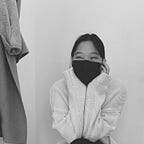Midterm Project Proposal: breadcrumbs
Alex Gao, Joanne Ma, Jessie Mindel, Julia Wang, Clarissa Wu
The notion of identity is often connected to and shaped by other people, object, places and experiences. These extensions of ourselves are theorized to be a core part of the human experience [1] and therefore play key roles in various facets of life like the maintenance of our emotion well-being [2], ritual/cultural preservation [3], and security/familiarity [4].
Previous studies have identified a few core mechanisms people use for their “extended identity” construction and exploration such as place reinterpretation/reuse or memory objects. Understanding and reflecting on our connections to these subtle, yet vital, extensions of our identities could help us understand ourselves, connect with our surroundings, and more.
Our Question
Our research project seeks to understand what we’ve termed the distributed self and the narratives that tie them together, acting almost as a hard drive for identity over time and across (sometimes digital) space.
Distributed self: distributed representations of oneself scattered across one’s physical and digital possessions
Rather than defining the self strictly, we instead seek to investigate how people interact with these distributed representations of themselves and the perspectives and opportunities for connection and reflection that these interactions offer. Some examples include:
- How a person sees themselves in/through their artifacts
- How a person’s artifacts understand their user/creator (e.g., Morse Things [5])
- How others see people through their artifacts
- How individuals find connection through shared artifacts (how a piece of someone else becomes a piece of you)
To explore the dynamics latent within these objects, the core research question we ask is as follows: In what ways is the distributed self important to a person’s (collaborative) construction of identity and place?
- When the distributed self is deliberately “exploded” or expanded, how might it impact human connection, understanding of self, creative enablement, or one’s sense of grounding, pause, and well-being?
- How do such interactions alter or better support our understanding of how our narratives evolve (or dissolve by way of entropy) over time, and what might a system built upon these principles offer in the way of better metaphors for slow technology in a fast-moving world?
Artifacts
We imagine that the system we build will incorporate two kinds of tangibles:
- The tangible memory objects (things already in someone’s room)
- The tangible interfaces that augment those objects to make evident and interactive the narrative threads that tie them together into a cohesive place
So far, we understand the objects that comprise one’s distributed self in three ways:
- As landmarks pointing to discrete snapshots of someone and their environment at a certain point in time
- Ever-evolving breadcrumbs (hence the name!) or traces of ourselves, narratives that grow with us and that we continue to edit
- Components of patterns or habits that we engage in, representative of a collapse of linear time into cycles which we re-experience through some semblance of ritual
Potential Directions
We hope to bring this project to life through designing an ambient room with traceable objects that become our metaphorical breadcrumb to look back on with others who have interacted with the object. We’re considering representing the trail with projections or some light installation that can act as visual data to display how we interact with objects in a space. Some methods we’re considering are:
- [Breadcrumbs, cycles/rituals] Projection mapping (including projectors on rails that follow or guide a user), mixed/augmented reality, haptic gloves, interactive and/or actuated, kinetic sculpture-based walls, and networked, narrative interactions between objects
- [Breadcrumbs] Unmaking, media that experiences read/edit wear
- [Landmarks, breadcrumbs] Shelving units, tags, and containers for memory objects
- [Landmarks] Stacking rocks: Mirroring the way in which people stack rocks on hiking trails over time, each person can stack a rock that in some way represents them (e.g., photo memory, sound, etc.) to create a stack of memories.
We’re excited to embark on this project and hear your feedback! Thanks for this opportunity!
💖
